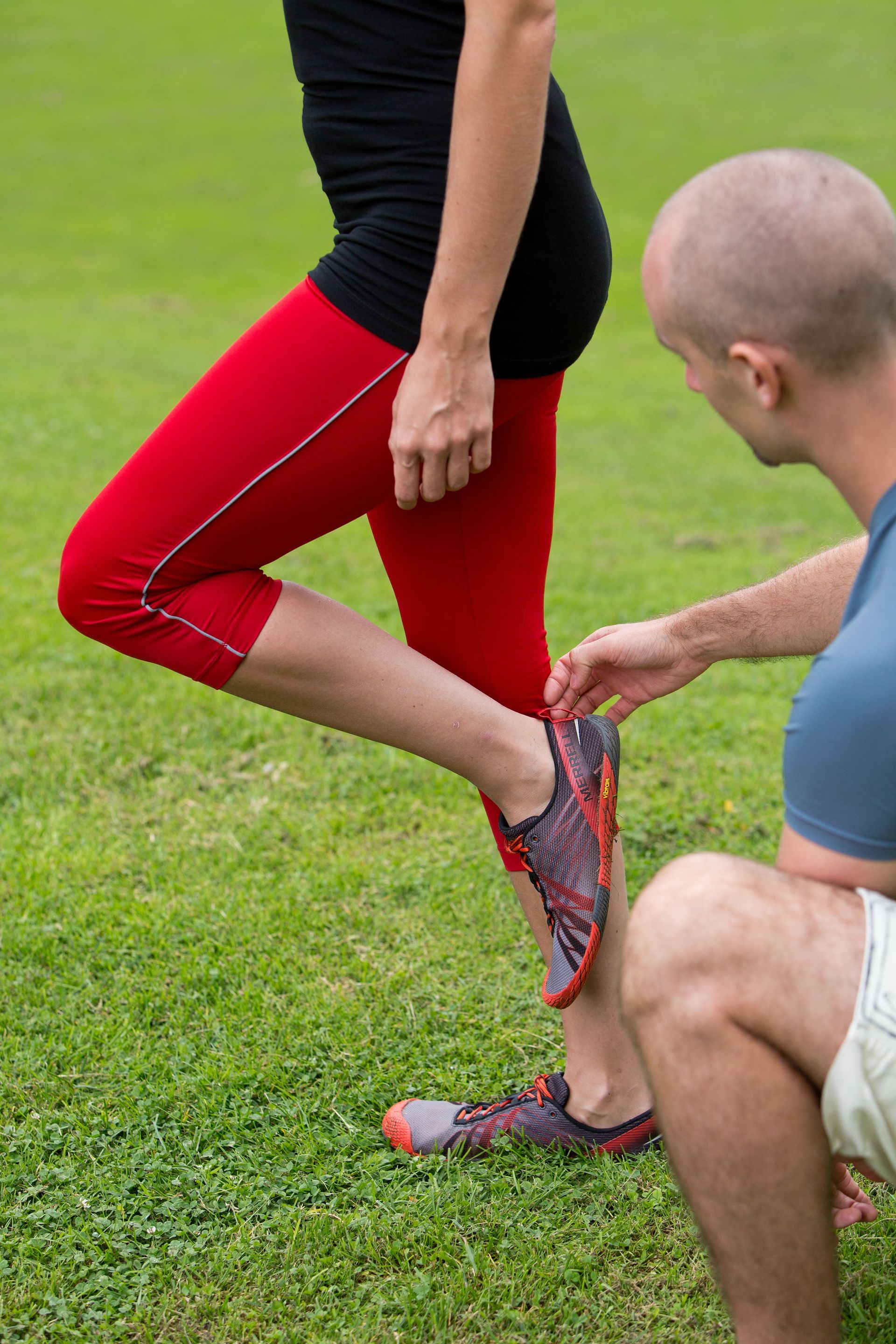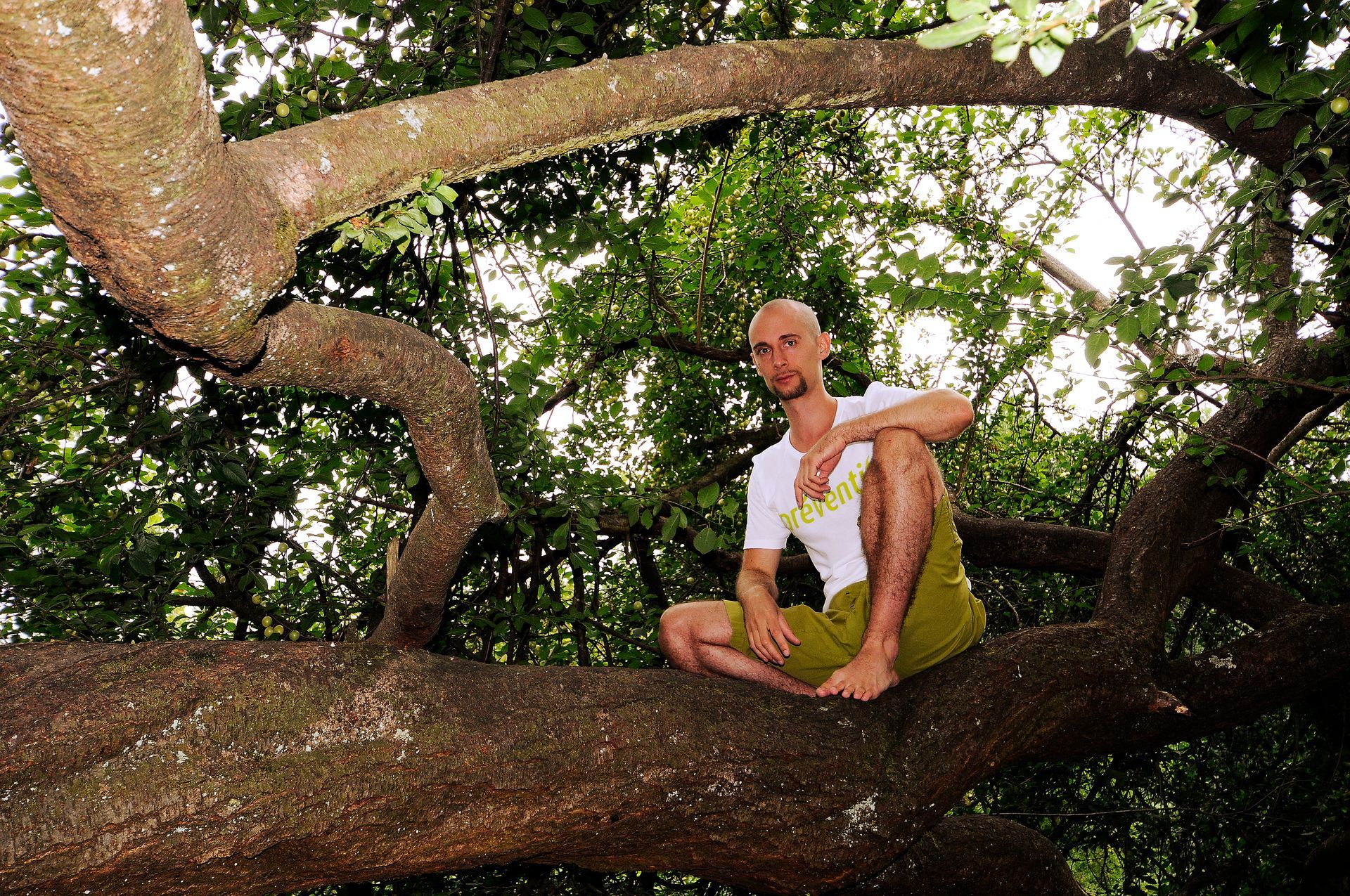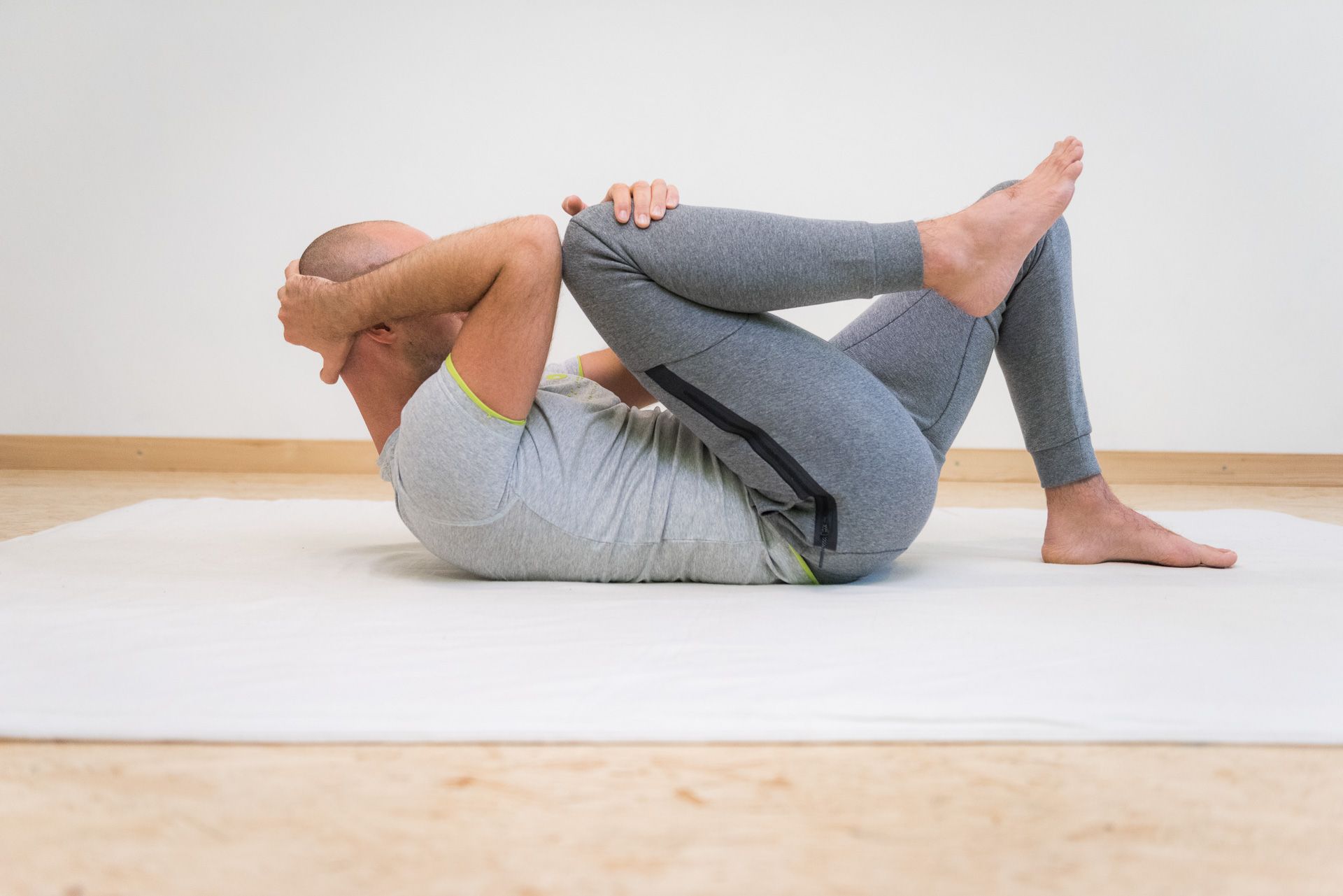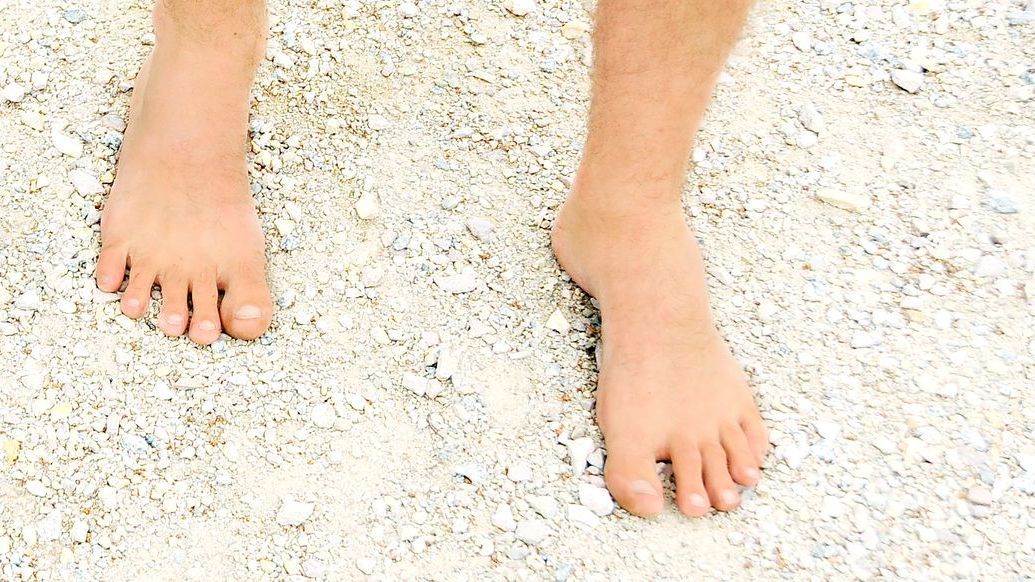Barefoot in business — barefoot shoes put to the test and why you should also wear them in the office
Reading time for this text: about 11 minutes.
Barefoot in business
Barefoot shoes put to the test and why you should also wear them in the office
A few days ago, I dug out an old article about barefoot shoes: “Legal dispute: US manufacturer compensates buyers of barefoot shoes.” The intro to the Spiegel article from the health section got straight to the point: “They may be harmful to your health.” We are talking about the well-known and highly polarizing toe shoes from the manufacturer Vibram, who laid the foundation for the barefoot shoe trend with their Vibram FiveFingers developed by Robert Fliri and Marco Bramani in 2006.
The legal dispute concerned advertising claims made about the health benefits of these minimalist shoes. According to the Spiegel article, Vibram had over-interpreted scientific statements about the benefits of the shoes. A potentially even more expensive conviction following a class action lawsuit was ultimately to be averted through compensation payments.
Those interested in barefoot shoes have been left behind, as the all-important question remains: are barefoot shoes beneficial to health as everyday footwear, or is the opposite the case? It is possible to find representatives for both positions, which does not necessarily make the decision any easier.
The definition of barefoot shoes
Let's start at the beginning with the question of what actually constitutes barefoot shoes. The term itself is rather misleading, because you are either barefoot or wearing shoes. I personally therefore prefer to use the alternative term minimal shoes, which indicates that it is a minimum type of shoe that aims to combine both worlds: walking barefoot and walking in shoes.
An international panel of experts has already defined the term minimal shoes more specifically in a study and concluded that minimal shoes only minimally impair the natural movement of the foot due to the following parameters:
- high flexibility of the shoe
- low heel height
- low weight
- low cushioning
- no movement control and stability devices
Since the above points require some explanation and one or two points should be added, let's take a closer look at the terms:
Toe box
I cannot explain why the expert panel did not include the toe box in their definition of minimal shoes. However, minimal shoes are also significantly characterized by a toe box that is based on the shape of the foot. The toe box of barefoot shoes therefore follows the anatomy of the foot and not a design trend such as a narrow tapered toe box with an absurdly shaped toecap — as is often the case with business shoes.
Particular attention should be paid here to the big toe, which can move more freely in its natural position with a well-shaped toe box and can therefore better perform its tasks, such as pushing off from the ground and maintaining balance. At the very least, studies have shown that people who wear normal shoes have a significantly larger hallux valgus angle than people who only walk barefoot. A change of shoes could be particularly beneficial to the health of women who wear high heels for work, as the frequency of hallux valgus is higher than average.
Heel height
The so-called heel drop refers to the difference in height between the forefoot and the heel. In minimal shoes, this should be zero millimeters, which is why the term “zero heel” or “zero drop” is typically used. This guideline is based on the fact that when walking barefoot, the heel and forefoot are likewise on the same level with no difference in height. In reference to the Goethe quote “Nature is no fun at all, she is always true, always serious, always strict, she is always right, and the mistakes and errors are always man's”, this follows the indisputable fact that we were born with a zero-drop heel and should therefore also be maintained in shoes.
Studies about shoe height have shown that a heel-forefoot height difference changes the range of motion of the ankle and knee and therefore the running movement/jogging. Regarding walking, a study was also able to show that wearing high heels has a noticeable effect on the gait pattern. Furthermore, the study results indicate that the pronounced height difference in the shoe leads to poorer static and dynamic balance. According to another study, even shoes with moderately high heels (1.5 in ≙ 3.8 cm) significantly increased knee torque, which is thought to be important for the development and/or progression of knee osteoarthritis. Women, especially those who already suffer from knee osteoarthritis, should therefore be advised against wearing shoes with even moderately high heels — so the study continues.
Motion control and stability devices
I personally only know motion control and stability devices in classic running shoes. In business shoes, foot misalignments are usually corrected with orthopedic insoles. Of course motion control and stability devices are not built into barefoot shoes.
Regarding a known foot malposition (flexible flatfoot), a randomized, controlled study came to the conclusion that foot posture could be improved both by an insole and by strengthening exercises for the foot muscles, as well as by an insole plus strengthening. However, the insole alone was less effective. The results of the study therefore speak in favor of strengthening exercises for foot misalignment.
In my opinion, this is an important indication, which I also consider in my work: I use and recommend minimal shoes, but I don't rely solely on the non-specific strengthening of the feet by simply wearing the shoes but plan other specific exercises to strengthen the foot (e.g. with the BlackBoard foot trainer* and the BlackBoard ToeBands*) so that orthopedic insoles are no longer necessary in the long term at best.
Sole thickness and stiffness
The last point concerns the sole of the shoe. The sole of barefoot shoes should be thin and flexible. The low material thickness of the sole should convey a certain barefoot feeling. This activates the sensory cells in the sole of our foot. At the same time, a thin shoe sole encourages movement and therefore also strengthens the foot structures involved. This was confirmed by a randomized, controlled study from 2019.
In addition to the low material thickness, the soles of minimal shoes are also more flexible and therefore also allow more twisting movements compared to the rigid, stiff and immobile soles of classic shoes.
Further tips that have emerged from the daily use of minimal shoes
Having worn minimalist shoes for a good 15 years in sports, leisure and on festive occasions and having tried out many manufacturers, I have come up with a few more useful details that I always pay attention to when buying barefoot shoes:
One is a well-fitting heel cap, because the heel should be well enclosed by the shoe — especially since the shoe sits much looser in the toe area than is the case with “normal” shoes.
In my opinion, the trend towards ever lighter barefoot shoes is also counterproductive because it often means that sensible design elements, such as a sufficiently padded or comfortable Achilles tendon area or other sensible pressure-reducing elements, are omitted. The focus here should be on comfort rather than on saving a few more grams of weight. Lightweight shoes are to be preferred. However, the aim here is not to achieve maximum weight savings, but to create the best possible minimal shoe.
A rounded shoe sole on the inner and outer edge, as is often but not always the case with barefoot shoes, has also proven to be extremely useful in everyday life, as it reduces ankle sprains many times over due to the design. This is particularly important for sports and trail running shoes. However, this detail can also be very interesting for business shoes, as there are also several potential sources of danger lurking in everyday working life, such as steps and curbs.

Summary of barefoot shoe basics
To summarize, we can state the following three points:
- Minimal shoes are no substitute for actually walking barefoot. For this reason, I often make the provocative statement that barefoot shoes are “bad” because they conceal deficits. This point is particularly relevant for jogging: Even if you have jogged for years in conventional running shoes, you can still start running immediately in non-cushioned barefoot shoes. However, people frequently forget that the change is a major adjustment for the body and can lead to overloading if not planned properly.
- Minimal shoes are also no substitute for a specific training of the foot muscles for existing malpositions. Barefoot shoes are therefore, how could it be otherwise, not miracle tools that can “cure” all foot misalignments, back pain etc. simply by walking.
- However, when used correctly and with realistic expectations, minimal shoes are a great training tool. The use of barefoot shoes in everyday life makes perfect sense, and both children and adults can benefit from minimal shoes in terms of their health.
Why use barefoot shoes in everyday business life?
In our society, there is still too strong a distinction between training and the rest of everyday life. While the entire everyday life of small children, if you let them, is characterized by exercise, for most adults, exercise is a 60-minute, self-contained process for which you may still have to go to the gym.
Barefoot shoes break through this old way of thinking and are an excellent training tool for everyday life. Without having to spend extra time on it, we can give our body and especially our feet more movement and strength.
In addition, the use of business barefoot shoes is also about the essential point that — compared to high heels and traditional business shoes — they are almost certainly less harmful to our bodies with regular use and still protect our feet from unpleasant environmental influences such as small stones, broken glass and hot asphalt in summer.
I recommend introducing minimalist business shoes into everyday life in a controlled manner. Weekends are the best time for this. You can then use them for a 60-minute walk in the park. Gradually, the barefoot shoes can then be worn throughout the day in the office.
At the same time, I wouldn't leave it to chance that feet with pronounced deformities will adapt to the new load on their own. In addition to barefoot shoes, well-chosen exercises and targeted, progressively increased barefoot walking on a wide variety of surfaces can help with training.
Design, quality and ecological aspects of barefoot shoes
While some people think of barefoot shoes as health shoes from the 1960s, others still see barefoot shoes as pure sports shoes. At the beginning of the barefoot shoe trend, minimal shoes were just sports shoes — often as an alternative to the well-known cushioned and stabilized running shoes. However, both the area of application and the design of barefoot shoes have changed considerably.
Many manufacturers now offer high-quality and well-designed barefoot shoes suitable for the office. However, as the shoelasts of barefoot shoes have a more foot-friendly shape compared to conventional shoelasts, you must be prepared to compromise when it comes to design. You will also look in vain for high heels in this type of business shoe.
In my opinion, companies that have firmly anchored ecological aspects, sustainability, and good working conditions in shoe production in their corporate culture are also more common than average in this shoe segment.
My recommendations for business barefoot shoes
The manufacturers of minimalist shoes implement the above barefoot shoe criteria in different ways. The ever-growing number of manufacturers does not necessarily contribute to a better overview of the market either, which is why I am now presenting some manufacturers of minimalist business shoes that I think are worth recommending in alphabetical order:
Bär Shoes
Bär Shoes, based in Bietigheim-Bissingen, has been manufacturing shoes with toe freedom since 1982. Since 1995, the shoes have been manufactured in the company's own factory by an Indian subsidiary. Compliance with labor, environmental and social standards are regularly audited by external institutes. Thanks to Sebastian Bär's sports barefoot shoe project
Joe Nimble*, barefoot shoes have now also found their way into the traditional Bär shoe range. The business-suitable barefoot shoe range is broadly based with boots, bootees, loafers, lace-up shoes and traditional business leather sneakers for men and women. Bär shoes also offer a repair service and the option of orthopedic modifications to shoes.
Click here for
Bär shoes.
Side info: My barefoot shoe career started many years ago with a Bär moccasin with a French natural rubber sole - which, incidentally, I could jog in better than my conventional running shoes at the time.
Be Lenka
Be Lenka is a Slovakian brand that has most of its product range manufactured in the European Union, particularly in Slovakia, Portugal and the Czech Republic. Production is now also carried out in Vietnam. According to the company, its aim is to supply sustainable shoes with the lowest possible environmental impact. Women in particular will find barefoot shoes suitable for the office here with a range of booties, sandals, ballerinas and boots.
Click here to see the shoes from
Be Lenka.
Groundies
The barefoot shoe brand Groundies from Freiburg in Breisgau, which has been part of the WB D2C Group since 2023, has business barefoot shoes in its range for both men* and women*. According to its own statements, the company attaches great importance to social and environmental compatibility in its supply chains and production. The minimalist shoes from Groundies are manufactured in Portugal as well as in Vietnam using high-quality materials.
Click here to visit
Groundies*.
Sole Runner
Since 2011, the family business Sole Runner, based on Lake Ammersee, has been producing business barefoot shoes for men and women under fair, sustainable and social aspects. Production is carried out in compliance with high environmental standards and very transparently in India by a certified producer and a family business. From my own experience, I recommend the Scout 2 Cognac Velours*, a hand-sewn moccasin with a wafer-thin sole that, according to the manufacturer, fits the foot like a second skin – not a classic business shoe, but definitely wearable with a suit.
Click here for Sole Runner. And here is the link to Sole Runner* on Amazon.
Side info: If you are looking for that special barefoot feeling, Sole Runner is the right choice, because the shoes really do have a wafer-thin yet robust sole.
Vivobarefoot
Through its BCorp certification, Vivobarefoot is committed to meeting the highest social and environmental standards, transparency and accountability and aims to one day produce fully circular barefoot shoes. As an absolute pioneer in minimal footwear, Vivobarefoot has also been producing barefoot shoes suitable for business since 2012, such as the classic men's Oxford shoe “Ra” with a stitched barefoot sole or the slip-on sandal “Opanka” for women.
Click here for the Vivobarefoot shoes.
Thanks to my cooperation with Vivobarfoot, there is a 20% discount on all Vivobarefoot barefoot shoes with the discount code DRACHENTOETER-FITNESS. The only shoes that cannot be discounted with this code are those on sale.
Side Info: I have been wearing Vivobarefoot barefoot shoes for ten years and have to say that the quality and design of the shoes are of a really high standard. For example, I have been wearing the robust Primus Trek outdoor shoes for seven years now, and I am still very satisfied. Even though the tread of the sole has worn away due to regular wear, the sole is still waterproof and well bonded. And if a Vivobarefoot shoe has ever been faulty, Vivobarefoot's customer service has always been really helpful.
Wildling Shoes
Wildling Shoes, which has already been awarded the German Founder's Prize, is a BCorp-certified company like Vivobarefoot and, together with other international model companies, stands for an ecological and social economic transformation. Since Wildling Shoes was founded in 2015, Wildling minimalist shoes have been handmade in Europe sustainably, under fair working conditions and using organic natural materials. The subtle color variations of Wildling sneakers (e.g. the Tanuki) and slip-ons (e.g. the Cahor) also cut a good figure in casual everyday business life.
Go to
Wildling here.
Zaqq
Zaqq manufactures business barefoot shoes for women* and men* with glued and, in many models, even hand-sewn rubber soles in its own factory in Leipzig. The wide range of business shoes made in Germany is produced sustainably and with high-quality materials (such as the two-millimeter-thick premium hunting leather). The range also includes vegan barefoot shoes*.
Click here for the Zaqq barefoot shoes*.
Side Info: If I had to wear dress shoes regularly, the Zaqq business barefoot shoes would definitely be my first choice. The selection is really impressive. Zaqq combines nappa leather and suede in a beautiful cut with a "fake" heel, which is only of an optical nature and in reality, a zero heel (model
QENTLE*). With the
PEAQ Brogue* model, Zaqq offers an elegant business shoe in a cognac-colored tone with elegant broguing. The
BRIQ* model has a classic derby cut on the outside, but shines on the inside with the desirable characteristics of a barefoot shoe.
Interested in barefoot shoes for leisure or business?
Don't want to spend time researching and comparing? I also advise my personal training, body therapy and workplace health promotion clients on minimal shoes. I have been familiar with the barefoot shoe market for many years and take a lot of the work out of my clients' own research. Furthermore, I also always provide manufacturer-independent advice, as every manufacturer or product has individual advantages and disadvantages. — If you are interested, please
contact me personally for more information about my barefoot shoe consulting.
– Thomas

References:
- Besson T, Morio C, Millet GY, Rossi J. Influence of shoe drop on running kinematics and kinetics in female runners. Eur J Sport Sci. 2019 Nov;19(10):1320-1327. doi: 10.1080/17461391.2019.1603327. Epub 2019 Apr 18. PMID: 30998439.
https://pubmed.ncbi.nlm.nih.gov/30998439/
- Chou SW, Cheng HY, Chen JH, Ju YY, Lin YC, Wong MK. The role of the great toe in balance performance. J Orthop Res. 2009 Apr;27(4):549-54. doi: 10.1002/jor.20661. PMID: 18932241.
https://pubmed.ncbi.nlm.nih.gov/18932241/
- chs (2014). In: Spiegel.
https://www.spiegel.de/gesundheit/ernaehrung/barfussschuhe-vibram-entschaedigt-us-kaeufer-der-fivefinger-schuhe-a-968695.html (September 2024)
- Esculier JF, Dubois B, Dionne CE, Leblond J, Roy JS. A consensus definition and rating scale for minimalist shoes. J Foot Ankle Res. 2015 Aug 19;8:42. doi: 10.1186/s13047-015-0094-5. PMID: 26300981; PMCID: PMC4543477.
https://pubmed.ncbi.nlm.nih.gov/26300981/
- Gabriel A, Fuchs K, Haller B, Sulowska-Daszyk I, Horstmann T, Konrad A. A four-week minimalist shoe walking intervention influences foot posture and balance in young adults-a randomized controlled trial. PLoS One. 2024 Jun 20;19(6):e0304640. doi: 10.1371/journal.pone.0304640. PMID: 38900749; PMCID: PMC11189255.
https://pubmed.ncbi.nlm.nih.gov/38900749/
- Gimunová M, Kolářová K, Vodička T, Bozděch M, Zvonař M. How barefoot and conventional shoes affect the foot and gait characteristics in toddlers. PLoS One. 2022 Aug 23;17(8):e0273388. doi: 10.1371/journal.pone.0273388. PMID: 35998149; PMCID: PMC9398026.
https://pubmed.ncbi.nlm.nih.gov/35998149/
- Jiao, Y., Džeroski, S., & Jurca, A. (2022). Analysis of hallux valgus angles automatically extracted from 3D foot scans taken in North America, Europe, and Asia. Ergonomics, 66(8), 1164–1175. https://doi.org/10.1080/00140139.2022.2139415.
https://www.tandfonline.com/doi/full/10.1080/00140139.2022.2139415#abstract
- Kenhub (o.J.).
https://www.kenhub.com/de/library/anatomie/grosser-zeh (September 2024)
- Kerrigan DC, Johansson JL, Bryant MG, Boxer JA, Della Croce U, Riley PO. Moderate-heeled shoes and knee joint torques relevant to the development and progression of knee osteoarthritis. Arch Phys Med Rehabil. 2005 May;86(5):871-5. doi: 10.1016/j.apmr.2004.09.018. PMID: 15895330.
https://pubmed.ncbi.nlm.nih.gov/15895330/
- Kirmizi M, Sengul YS, Akcali O, Angin S. Effects of foot exercises and customized arch support insoles on foot posture, plantar force distribution, and balance in people with flexible flatfoot: A randomized controlled trial. Gait Posture. 2024 Sep;113:106-114. doi: 10.1016/j.gaitpost.2024.05.030. Epub 2024 Jun 2. PMID: 38865799.
https://pubmed.ncbi.nlm.nih.gov/38865799/
- Ridge ST, Olsen MT, Bruening DA, Jurgensmeier K, Griffin D, Davis IS, Johnson AW. Walking in Minimalist Shoes Is Effective for Strengthening Foot Muscles. Med Sci Sports Exerc. 2019 Jan;51(1):104-113. doi: 10.1249/MSS.0000000000001751. PMID: 30113521.
https://pubmed.ncbi.nlm.nih.gov/30113521/
- Soemarko DS, Rahmasari F, Kamal AF, Cahayadi SD, Herqutanto. Hallux valgus among sales promotion women wearing high heels in a department store. J Orthop Surg (Hong Kong). 2019 Jan-Apr;27(1):2309499019828456. doi: 10.1177/2309499019828456. PMID: 30782102.
https://pubmed.ncbi.nlm.nih.gov/30782102/
- Vibram (o.J).
https://www.vibram.co.uk/c-258-vibram-fivefingers.aspx (September 2024)
- Zeng Z, Liu Y, Hu X, Li P, Wang L. Effects of high-heeled shoes on lower extremity biomechanics and balance in females: a systematic review and meta-analysis. BMC Public Health. 2023 Apr 20;23(1):726. doi: 10.1186/s12889-023-15641-8. PMID: 37081521; PMCID: PMC10120101.
https://pubmed.ncbi.nlm.nih.gov/37081521/
- Research on the websites of the various barefoot shoe manufacturers (September 2024)
Note about affiliate links: Blog writing is fun, but also a big time commitment. You can support us in creating our blog posts by using the links marked with *. These are so-called affiliate links (this applies to a few, sometimes even to no links in the text). If you buy a product on the linked pages, we receive - without you having to pay more - a small commission. You profit from our article and product recommendations, and we get a small commission. A win-win situation. Cool, isn't it?









